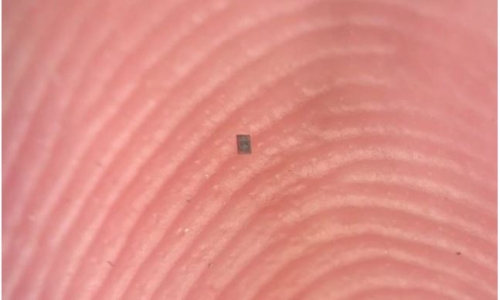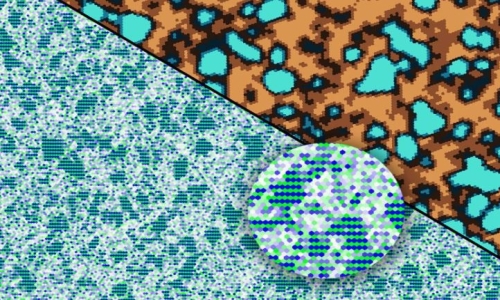


 5:50:34
5:50:34  2018-07-24
2018-07-24  1658
1658

For numerous decades, people have argued that there is no tie that links the world religions to the modern day science.
This topic is particularly interesting because it portrays the religion in a very educated light.
Let's start off with a little bit of history. Early in the 9th century, the Abbasid caliphs adopted a deliberate approach to the cultural and intellectual growth of the empire. They established the House of Wisdom, an academy of science, and gathered manuscripts in Greek and Sanskrit, and scholars who could understand them.
Important Greek and Indian mathematical books were translated and studied, leading to a new era of scientific creativity that was to last until the 14th century. One of the first Greek texts translated was Euclid's classic geometry text Elements.
This had a huge impact; Arabic mathematicians then adopted a very Greek approach, formulating theorems precisely and proving them formally in Euclid's style. Like Greek mathematics, which was defined more by the common language in which it was written and carried out than the nationality of the practitioners, Arabic mathematics was determined largely by the common use of Arabic by scholars of many nationalities, spread throughout the Islamic Empire.
One of the earliest and most distinguished of the Arabic mathematicians was the 9th century scholar Abu Ja'far Mohammed ibn Musa Al-Khwarizmi, an astronomer to the caliph at Baghdad. His full name can be translated as "Father of Ja'far, Mohammed, son of Moses, native of the town of Al-Khwarizmi".
Al-Khwarizmi wrote several enormously influential books. One, in particular, describes how to write numbers and compute with them using the place-value decimal system we use today, which had been developed in India some time before 600 AD.
This book would, when translated into Latin 300 years later, prove a major source for Europeans who wanted to learn the new system. Today, we know it as the Hindu-Arabic system. It is taught to schoolchildren worldwide.
Many translations of the book began with the phrase " dixit Algorismi " ("so says Al-Khwarizmi"), a practice that led to the adoption in medieval times of the term "algorism" to refer to the process of computing with the Hindu-Arabic numerals.
"Algorithm" is an obvious derivation. Another of Al- Khwarizmi's manuscripts was called Kitab al jabr w'al-muqabala , which translates roughly as "restoration and compensation".
The book is essentially an algebra text. It opens with a discussion of quadratic equations, then goes on to some practical geometry, followed by simple linear equations, and ends with a long section on how to apply mathematics to solve inheritance problems. The Englishman Robert of Chester translated the algebra book from Arabic into Latin in 1145. Such was the influence of this work that the Arabic phrase al jabr in the book's title gave rise to our modern word "algebra". After Al-Khwarizmi, algebra became an important part of Arabic mathematics.
Arabic mathematicians learned to manipulate polynomials, to solve certain algebraic equations and more. For modern readers, used to thinking of algebra as the manipulation of symbols, it is important to realize that the Arabic mathematicians did not use symbols. Everything was done in words. It was largely through translations of the Arabic texts into Latin that western Europe, freshly emerged from the Dark Ages, kick-started its mathematics in the 10th and subsequent centuries, paving the way for the scientific revolution in the 17th century and thence to the scientific and technological world we now take for granted.
Without the dedication of the Islamic scholars of the 9th to the 14th century, it is not clear that Western Europe would have become the world leader in science and technology. And it is also unlikely that the United States would have inherited that leadership role.
Now that we're done with the history, let us go into the exciting facts. We will together analyze the development of the embryo according to the Holy Quran.
The miracle of embryonic development is mentioned in the Quran in such minute detail, much of which was unknown to scientists until only recently. It mentions the first stages of life after conception, the second stage of life after conception, and witnesses of scientists about these scientific facts of the Quran.
In the Holy Quran, God speaks about the stages of man’s embryonic development:
“We created man from an extract of clay. Then We made him as a drop in a place of settlement, firmly fixed. Then We made the drop into an alaqah (leech, suspended thing, and blood clot), then We made the alaqah into a mudghah (chewed substance)…” (Quran 23:12-14)
Literally, the Arabic word alaqah has three meanings: (1) leech, (2) suspended thing, and (3) blood clot.
In comparing a leech to an embryo in the alaqah stage, we find similarity between the two. Also, the embryo at this stage obtains nourishment from the blood of the mother, similar to the leech, which feeds on the blood of others.
The second meaning of the word alaqah is “suspended thing.” the suspension of the embryo, during the alaqah stage, in the womb of the mother. The third meaning of the word alaqah is “blood clot.” We find that the external appearance of the embryo and its sacs during the alaqah stage is similar to that of a blood clot. This is due to the presence of relatively large amounts of blood present in the embryo during this stage.
Also during this stage, the blood in the embryo does not circulate until the end of the third week. Thus, the embryo at this stage is like a clot of blood.
So the three meanings of the word alaqah correspond accurately to the descriptions of the embryo at the alaqah stage.
The next stage mentioned in the verse is the mudghah stage. The Arabic word mudghah means “chewed substance.” If one were to take a piece of gum and chew it in his or her mouth and then compare it with an embryo at the mudghah stage, we would conclude that the embryo at the mudghah stage acquires the appearance of a chewed substance. This is because of the somite's at the back of the embryo that “somewhat resemble teeth marks in a chewed substance.”
How could Muhammad, may the mercy and blessings of God be upon him, have possibly known all this 1400 years ago, when scientists have only recently discovered this using advanced equipment and powerful microscopes which did not exist at that time? Hamm and Leeuwenhoek were the first scientists to observe human sperm cells (spermatozoa) using an improved microscope in 1677 (more than 1000 years after Muhammad). They mistakenly thought that the sperm cell contained a miniature preformed human being that grew when it was deposited in the female genital tract.
Professor Emeritus Keith L. Moore is one of the world’s most prominent scientists in the fields of anatomy and embryology and is the author of the book entitled The Developing Human, which has been translated into eight languages. This book is a scientific reference work and was chosen by a special committee in the United States as the best book authored by one person. Dr. Keith Moore is Professor Emeritus of Anatomy and Cell Biology at the University of Toronto, Toronto, Canada. There, he was Associate Dean of Basic Sciences at the Faculty of Medicine and for 8 years was the Chairman of the Department of Anatomy. In 1984, he received the most distinguished award presented in the field of anatomy in Canada, the J.C.B. Grant Award from the Canadian Association of Anatomists. He has directed many international associations, such as the Canadian and American Association of Anatomists and the Council of the Union of Biological Sciences.
In 1981, during the Seventh Medical Conference in Dammam, Saudi Arabia, Professor Moore said: “It has been a great pleasure for me to help clarify statements in the Quran about human development. It is clear to me that these statements must have come to Muhammad from God, because almost all of this knowledge was not discovered until many centuries later. This proves to me that Muhammad must have been a messenger of God.”
During one conference, Professor Moore stated: “....Because the staging of human embryos is complex, owing to the continuous process of change during development, it is proposed that a new system of classification could be developed using the terms mentioned in the Quran and Sunnah (what Muhammad, may the mercy and blessings of God be upon him, said, did, or approved of). The proposed system is simple, comprehensive, and conforms with present embryological knowledge. The intensive studies of the Quran and hadeeth (reliably transmitted reports by the Prophet Muhammad’s companions of what he said, did, or approved of) in the last four years have revealed a system for classifying human embryos that is amazing since it was recorded in the seventh century A.D. Although Aristotle, the founder of the science of embryology, realized that chick embryos developed in stages from his studies of hen’s eggs in the fourth century B.C., he did not give any details about these stages. As far as it is known from the history of embryology, little was known about the staging and classification of human embryos until the twentieth century. For this reason, the descriptions of the human embryo in the Quran cannot be based on scientific knowledge in the seventh century.
This confession made by Dr. Moore clearly suggests the obvious. He is explaining how the Quran described the embryo and it's development in such a precise manner.
Reality Of Islam |
|

A tiny robo

By applying

Stanford, C

A new study
 9:3:43
9:3:43
 2018-11-05
2018-11-05
10 benefits of Marriage in Islam
 7:5:22
7:5:22
 2019-04-08
2019-04-08
benefits of reciting surat yunus, hud &
 9:45:7
9:45:7
 2018-12-24
2018-12-24
advantages & disadvantages of divorce
 11:35:12
11:35:12
 2018-06-10
2018-06-10
 6:0:51
6:0:51
 2018-10-16
2018-10-16
 8:15:37
8:15:37
 2023-02-16
2023-02-16
 2:33:4
2:33:4
 2023-02-15
2023-02-15
a hero waters thirsty wild animals
 9:4:9
9:4:9
 2022-01-06
2022-01-06
 2:2:13
2:2:13
 2022-10-08
2022-10-08
 4:2:19
4:2:19
 2022-10-10
2022-10-10
 10:55:53
10:55:53
 2022-06-13
2022-06-13
 3:18:29
3:18:29
 2022-12-24
2022-12-24
 5:41:46
5:41:46
 2023-03-18
2023-03-18
| LATEST |